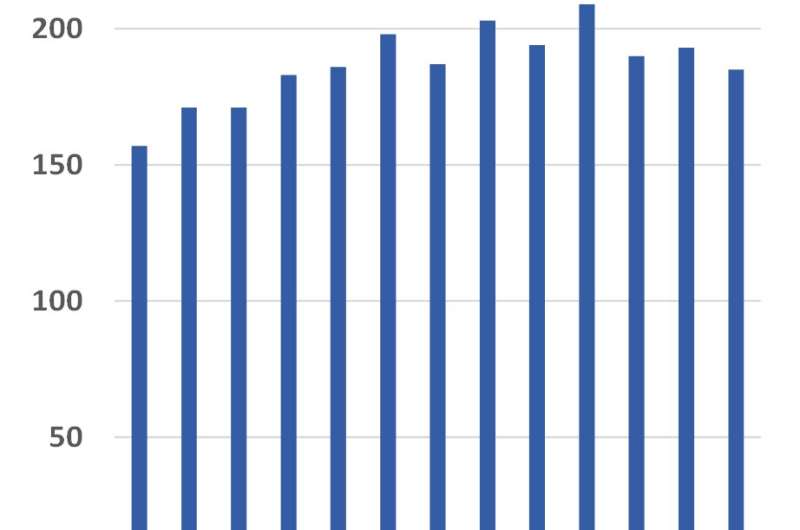This article has been reviewed according to Science X's editorial process and policies. Editors have highlighted the following attributes while ensuring the content's credibility:
fact-checked
peer-reviewed publication
trusted source
proofread
Radiation oncology workforce expected to remain stable through 2030

A new analysis of the U.S. radiation oncology workforce projects a relative balance between the supply of radiation oncologists and the demand for radiation therapy services through 2030.
The report was produced by Health Management Associates (HMA), a consulting firm commissioned by the American Society for Radiation Oncology (ASTRO) to conduct an independent assessment of the radiation oncologist workforce. The report accompanies a review commentary from the ASTRO Workforce Task Force published as an article-in-press today in the International Journal of Radiation Oncology • Biology • Physics.
ASTRO assembled its Workforce Task Force in 2021 to address questions related to a potential imbalance in the supply of practicing radiation oncologists in the U.S. and the demand for radiation therapy services. The task force members included physicians from community practices and academic institutions; radiation oncology residents, residency program directors and department chairs; and members with health equity expertise. HMA was tasked to evaluate trends in supply and demand, and to model future workforce projections.
The HMA report models several potential scenarios for the future radiation oncologist workforce, based on trends including the number of doctors entering and leaving the specialty; projected growth in Medicare usage due to an aging population; changing demand for radiation therapy, including new indications; increased use of hypofractionation; and radiation oncologist workload. Key takeaways are as follows:
- The most likely scenario analysis, one that factored in growth of the number of Medicare beneficiaries and increasing productivity per radiation oncologist, projected a relative balance between radiation oncologist supply and demand for radiation therapy services through 2030.
- Both the growth of Medicare beneficiaries and changes in physician productivity have a significant impact on the model results and will need to be monitored in the future. To maintain balance in the future workforce, radiation oncologist supply and productivity will need to match the increase in demand expected to result from continued Medicare beneficiary growth and the increasing average age of those beneficiaries.
- Due to a projected slowing in the growth of Medicare beneficiaries beyond 2030, as well as uncertain practice patterns and radiation utilization in the 5-10 years following 2030, the report noted the importance of monitoring trends and updating the analysis with new data beyond 2030.
- A modeling tool is available free for the radiation oncology community to evaluate different scenarios.
"We appreciate the efforts of the ASTRO Workforce Task Force to address these difficult questions. The report's findings underscore that the field of radiation oncology is likely to face relative growth and contraction at various times in the years ahead. It is important that stakeholders continue to regularly evaluate workforce needs and analyze trends to help the specialty better understand the potential for over- or undersupply," said Geraldine M. Jacobson, MD, MBA, MPH, FASTRO, Chair of the ASTRO Board of Directors.
"The results of this study are encouraging for our specialty. However, they also support the notion that we are most likely in balance over the next few years, and expansion of trainee positions, through both new programs and growing resident cohorts at existing programs, should be considered with caution. The analysis also suggests that we should continue to monitor the workforce needs regularly as supply and demand can change over time," said Bruce Haffty, MD, FASTRO, Chair of the ASTRO Workforce Task Force.
More information: Chirag Shah et al, The American Society for Radiation Oncology Workforce Taskforce Review of the United States Radiation Oncology Workforce Analysis, International Journal of Radiation Oncology*Biology*Physics (2023). DOI: 10.1016/j.ijrobp.2023.02.056





















